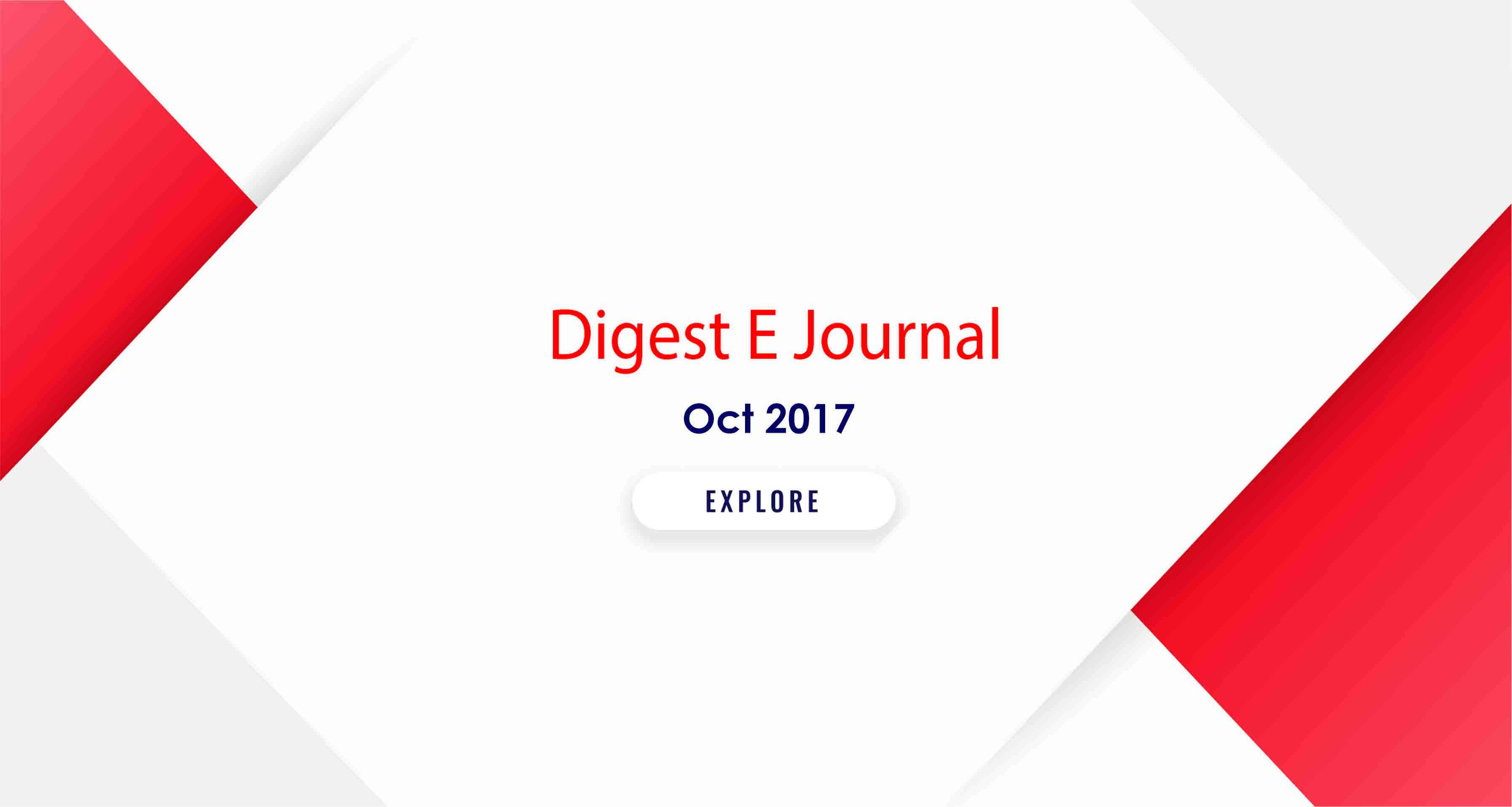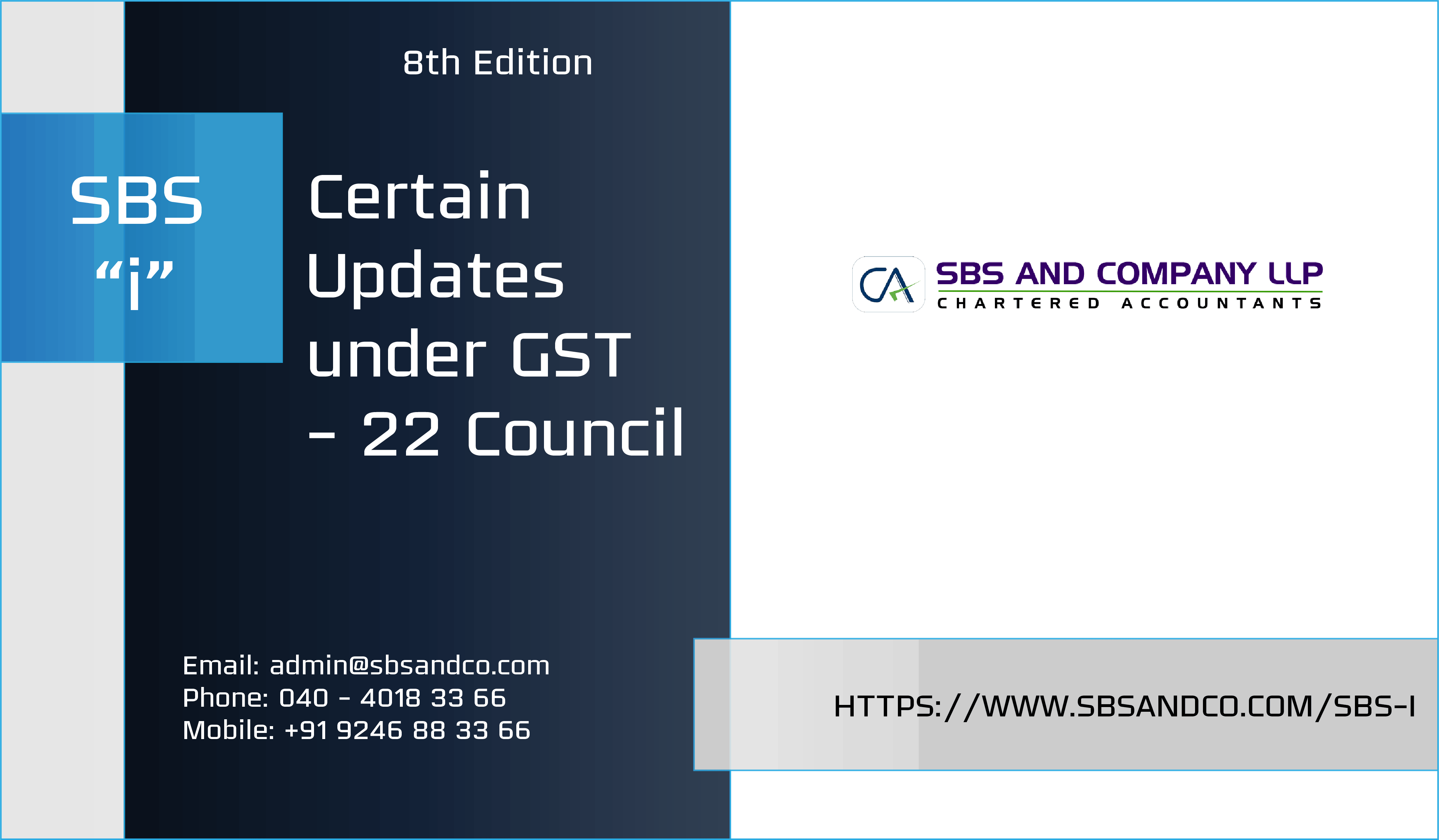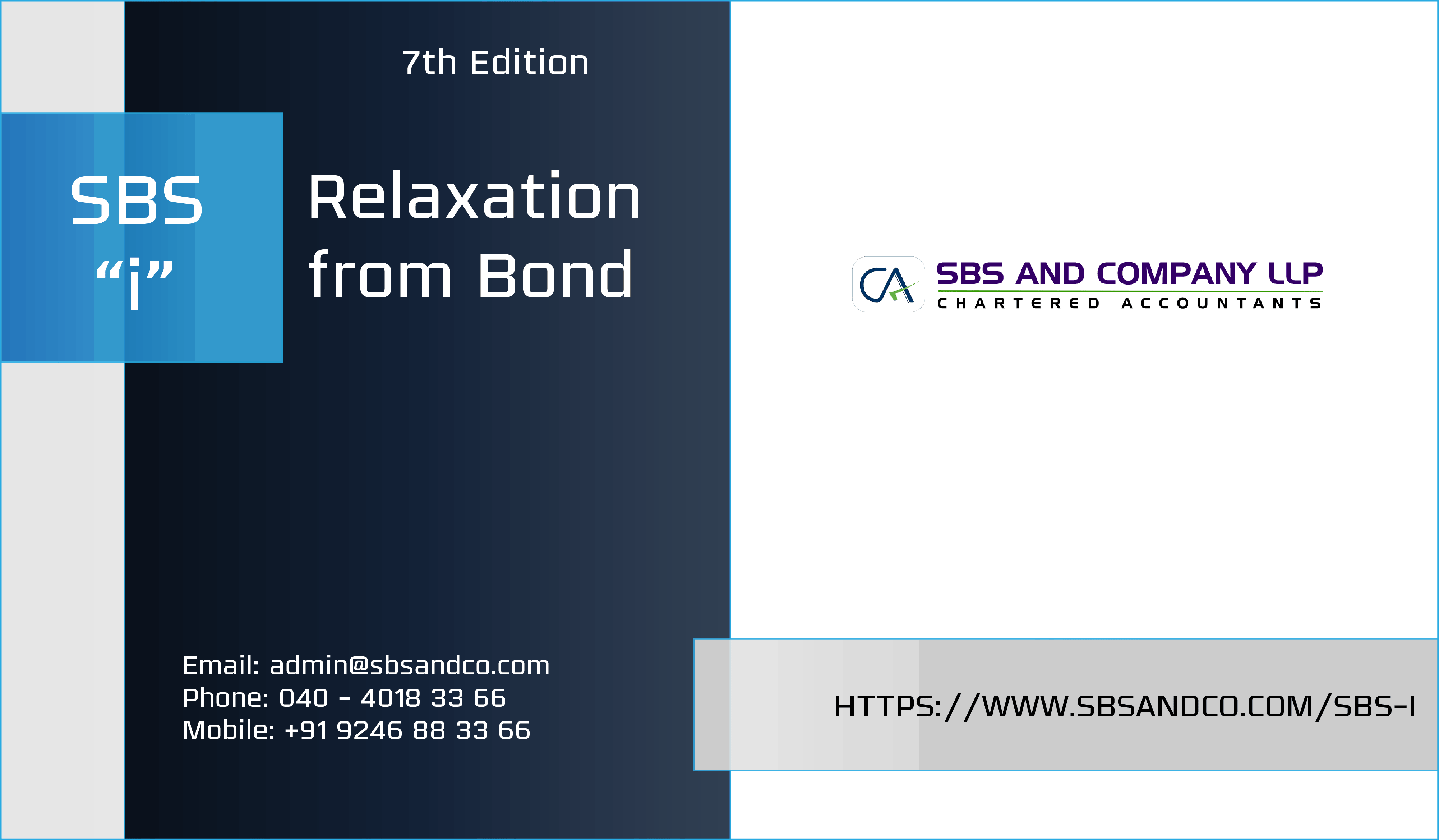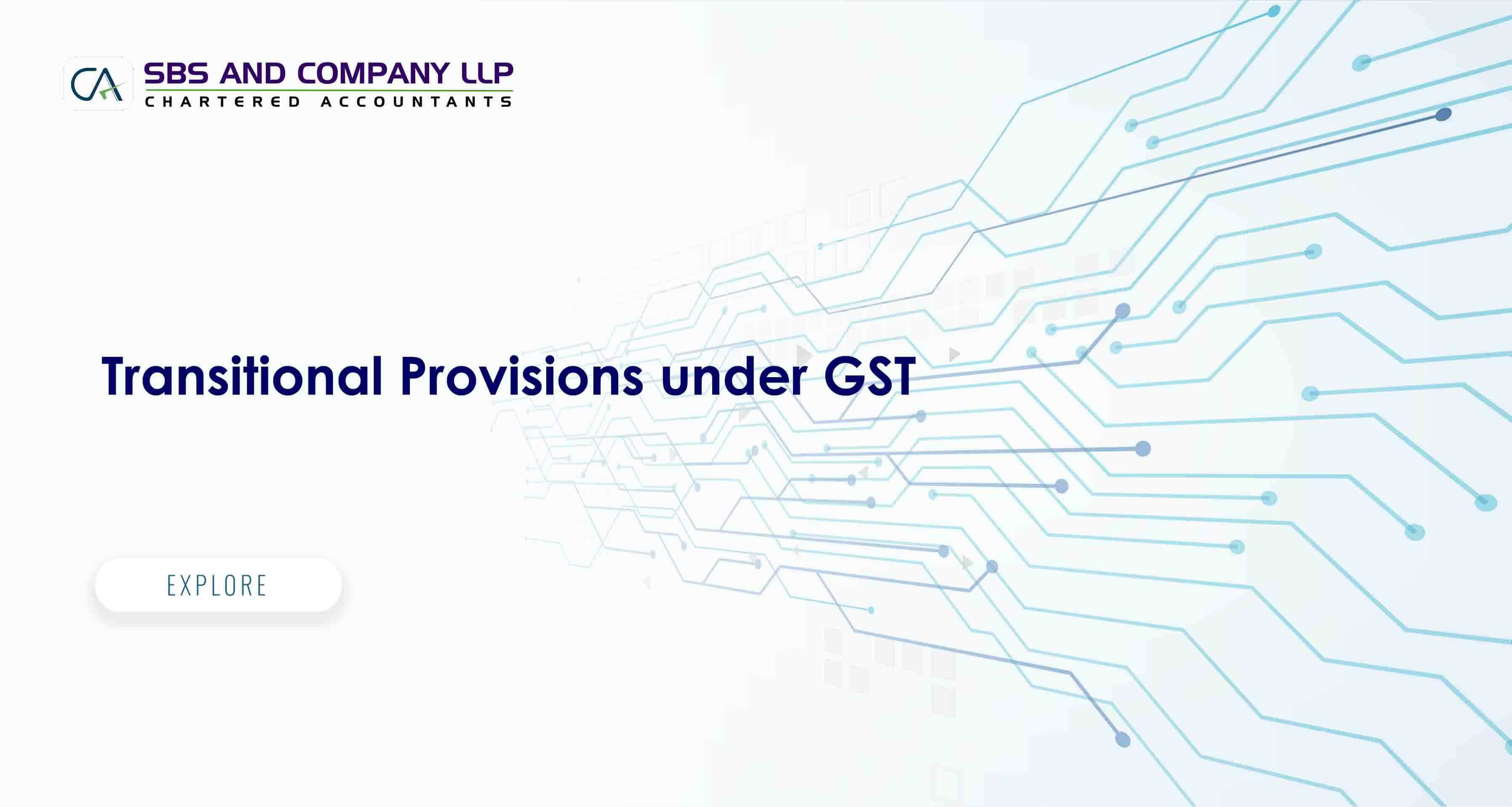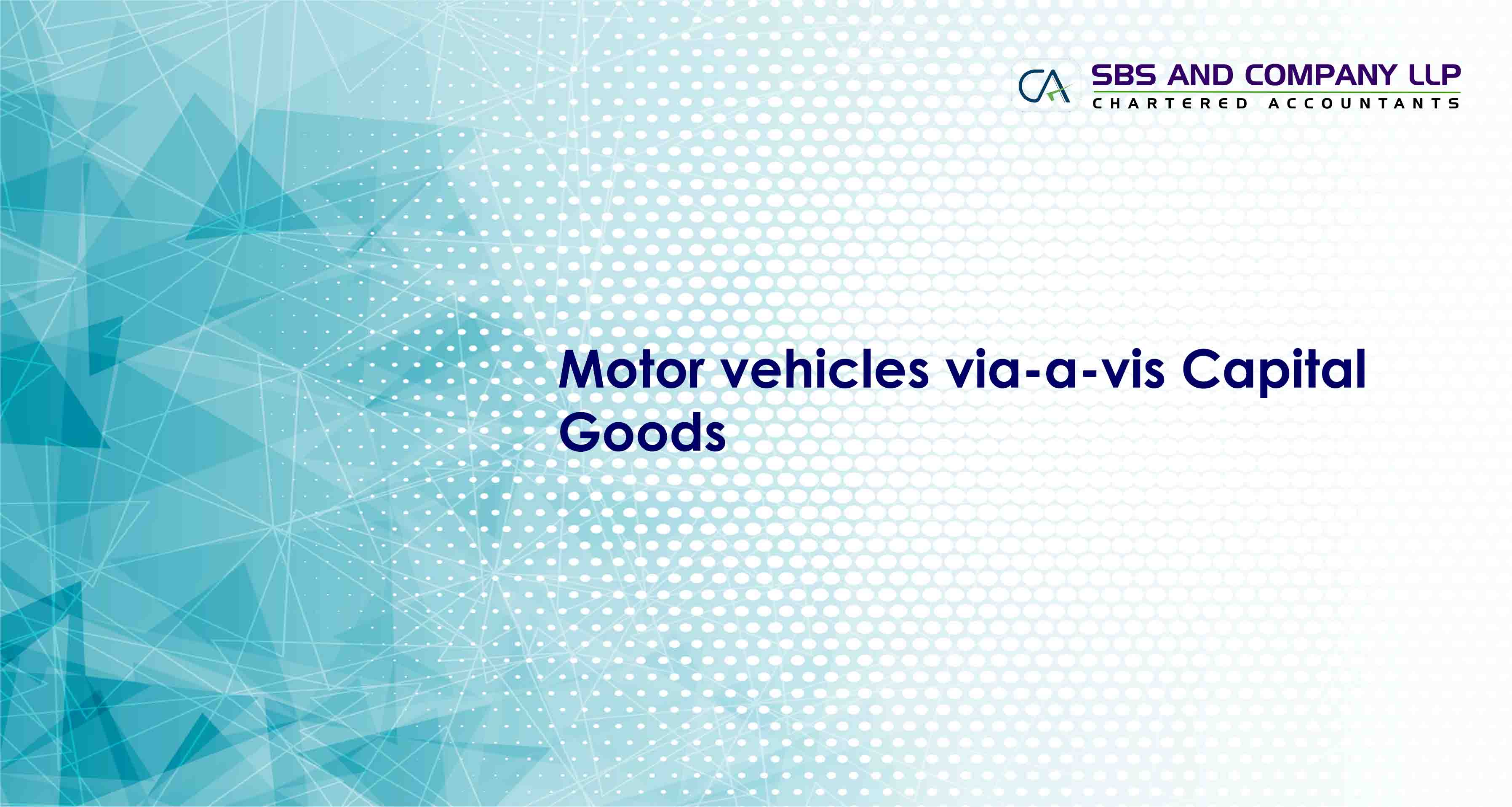The roll out of GST is under a promise that the credit of all taxes paid on goods and services during transition shall be given to the supplier to enable him to set off against the output tax. This was mainly to remove the cascading effect which always led to increase in the prices of the goods or services. On such premise, the Goods & Services Tax (for brevity ‘GST’) was brought in with effect from 01st July 17.
There were numerous ambiguous issues, where the Government in consultation with GST Council was trying to address. However, one major issue, which we have identified was the eligibility of credit of certain capital goods which are also motor vehicles. The stakes involved are pretty high and clarity in this regard before filing the transitional forms would help the trade a lot.
In this write up, we try to explain the issue and the possible interpretation which would help the trade in availing the benefit. However, the interpretation rendered here comes with a risk which the reader must proceed with caution. The issue for consideration is whether the excise duty paid on tippers and dumpers is eligible for carry forward into GST regime or whether the GST paid on tippers and dumpers is not disallowed under Section 17(5)(a)? Before, addressing such issue, allow us to take you to certain relevant provisions which assume significance in this connection.
Section 16 of Central Goods & Services Tax Act, 17 (for brevity ‘CGST Act’) allows every registered person to avail the credit of taxes paid on goods and services used or intended to be used for the purposes of business unless such goods or services are barred under Section 17 of CGST Act.
Section 17(5)(a) of CGST Act specifically states motor vehicles and other conveyances except when they are used for specified purposes (such purposes shall be dealt at appropriate place) are disallowed. That is to say the credit of motor vehicles shall only be allowed to be taken by the supplier only if the supplier is engaged in supply of specified transactions. In all other instances, the credit remains disallowed.
The specified purposes for which the credit of motor vehicles is allowed is as under:
- For making taxable the following taxable supplies, namely:
- Further supply of such vehicles or conveyances; or
- Transportation of passengers; or
- Imparting training on driving, flying, navigating such vehicles/conveyances
- For transportation of goods
15 | P a g e
SBS Wiki www.sbsandco.com/wiki
As stated above, if the supplier who has purchased motor vehicles for using them for any of the above specified purposes, he shall be eligible to avail the credit subject to other conditions. Let us take an example to understand the same, ABC Private Limited is engaged in development of software services and for transportation of its employees, it purchased certain motor vehicles on paying GST. Such paid GST cannot be availed as credit by ABC Private Limited, since the said company is not engaged in any of the specified activities. Suppose, in the same example, let us assume ABC Private Limited is a courier agency instead of software development company. In such instance, the credit of GST paid on motor vehicles shall be available since ABC Private Limited is engaged in courier (transportation of goods).
Now, the issue, for consideration is -
whether GST paid on tippers and dumpers is restricted under Section 17(5)(a) of CGST Act, because tippers and dumpers are required to register under Motor Vehicles Act, 1988 and thereby becomes motor vehicle and Section 17(5)(a) restricts credits on motor vehicles (except when they are used for specified purposes, since tippers and dumpers are not used for such specified purposes)?
or
Section 17(5)(a) restricts certain class of motor vehicles which are used for specified purposes and all other motor vehicles which are not designed for such specified purpose does not find restriction and are available for credit?That is to say, is there a blanket restriction on all motor vehicles under Section 17(5)(a)?
In our opinion, the restriction placed under Section 17(5)(a) is only for motor vehicles which are used for transportation of passengers, imparting training and for transportation of goods. The phrase ‘motor vehicles’ has not been defined under CGST Act. Hence, there is no blanket restriction that all motor vehicles are disallowed under said section.
Now, on a detailed perusal of Section 17(5)(a), it can be inferred that restriction is only for motor vehicles which are used either for transportation of passengers or goods or imparting training. The credit will be eligible if the supplier is engaged in any of the above activities. Hence, the credit of such motor vehicles is also not totally disallowed, it is conditionally allowed.
Hence, it can be inferred, that all other motor vehicles which are used other than for transportation of passengers or goods or imparting training are not restricted under Section 17(5)(a), since they do not fall under such class.
The tippers and dumpers are neither used for transportation of passengers nor for transportation of goods and hence there is no requirement to check under Section 17(5)(a). In the previous example, ABC Private Limited uses the motor vehicles for transportation of employees which falls under the class ‘transportation of passengers’ mentioned in Section 17(5)(a) and hence liable for disallowance.
16 | P a g e
|
Motor Vehicles vis-a-vis Capital Goods
|
SBS Wiki www.sbsandco.com/wiki
Hence, the test to be applied is, whether the motor vehicle on which credit is being contemplated to be availed falls under the class mentioned under Section 17(5)(a) or not. If the said motor vehicle falls under such class and used for such specified purposes, then credit is eligible. If such motor vehicle falls under such class and not used for such specified purposes, then credit is not eligible. For motor vehicles which are not falling under the class of Section 17(5)(a), the credit shall be eligible.
Therefore, we opine that the GST paid on tippers and dumpers shall be eligible for credit and it is not restricted under Section 17(5)(a) of CGST Act. Apart from the above, the recent judgment of Honourable Tribunal of Delhi in the case of Soumya Mining Limited vs Commissioner of Central Excise, Raipur 2017-TIOL-2432-CESTAT-DEL has held that dumpers or tippers are not motor vehicles. The decision was rendered by placing reliance on the judgment of Supreme Court in the case of Belani Ores Limited Etc vs State of Orissa Etc 1975 AIR 17. Hence, accordingly the restriction placed in Section 17(5)(a) does not apply to dumpers/tippers since they are not motor vehicles.
Further, there is a set of FAQs for Builder released by Media & Entertainment Sectoral Group , vide which the Sectoral Group has answered the credit on tippers and dumpers can be availed since they were being used for transportation of goods. If that is the case, then the credit can be availed without any worry. However, the question is, whether tippers and dumpers are used for transportation of goods, the answer would be negative.
Barring the FAQs, let us know proceed to examine the eligibility of excise duty paid on tippers and dumpers that are purchased in the year 16-17 and now lying in the closing Cenvat balance. The closing credit can be brought into GST regime under Section 140(1) of CGST Act or balance credit can be availed under 140(2)ibid.
Section 140(1) and 140(2) allow the credit only when the credit of such capital goods is eligible under the existing law and GST laws. Tippers and dumpers were specifically mentioned as capital goods under Rule 2(a) of Cenvat Credit Rules, 2004 and hence the same were eligible under the existing laws. Under GST laws, as discussed above, the credit is also allowed subject to the risk of interpretation.
However, we advise the credit to be availed since this being transitional one, if not availed now, cannot be availed later. We advise such transitional credit must be parked for certain time till there exists clarity on the issue and then take an appropriate decision to minimise other liabilities.


